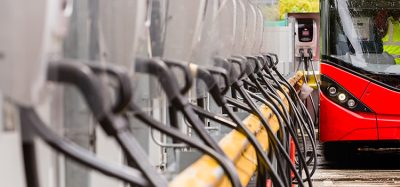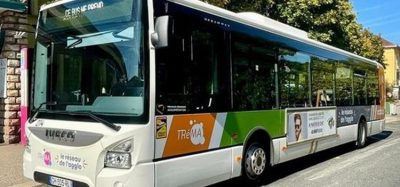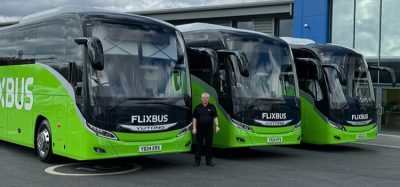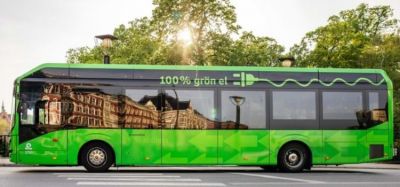Understanding urban transport opportunities
- Like
- Digg
- Del
- Tumblr
- VKontakte
- Buffer
- Love This
- Odnoklassniki
- Meneame
- Blogger
- Amazon
- Yahoo Mail
- Gmail
- AOL
- Newsvine
- HackerNews
- Evernote
- MySpace
- Mail.ru
- Viadeo
- Line
- Comments
- Yummly
- SMS
- Viber
- Telegram
- Subscribe
- Skype
- Facebook Messenger
- Kakao
- LiveJournal
- Yammer
- Edgar
- Fintel
- Mix
- Instapaper
- Copy Link
Posted: 3 January 2012 | Tamás Fellegi, Minister for National Development, Hungary | No comments yet
The liveability of our cities and towns is increasingly determined by the extent to which environmentally-friendly, low-noise transport alternatives can arrest and replace fast motorisation. Consequently, communal transport must be given more room against the use of private cars. This, however, requires uninterrupted improvement in services, their adjustment to the needs, especially through the development and interconnection of rail-guided communication, which can provide for competitive total times spent. In Hungary, urban public passenger transport service providers struggle with heavy internal debt, considerably obsolete fleet and assets, and decades-long backlogs. In view of the restricted budgetary elbowroom, the government might assist in the improvement of various (local and interurban) passenger services by the alignment of transport companies’ operation and itineraries, and the improvement of opportunities to change from one to another line or means of transport…
The liveability of our cities and towns is increasingly determined by the extent to which environmentally-friendly, low-noise transport alternatives can arrest and replace fast motorisation. Consequently, communal transport must be given more room against the use of private cars. This, however, requires uninterrupted improvement in services, their adjustment to the needs, especially through the development and interconnection of rail-guided communication, which can provide for competitive total times spent. In Hungary, urban public passenger transport service providers struggle with heavy internal debt, considerably obsolete fleet and assets, and decades-long backlogs. In view of the restricted budgetary elbowroom, the government might assist in the improvement of various (local and interurban) passenger services by the alignment of transport companies’ operation and itineraries, and the improvement of opportunities to change from one to another line or means of transport...
The liveability of our cities and towns is increasingly determined by the extent to which environmentally-friendly, low-noise transport alternatives can arrest and replace fast motorisation. Consequently, communal transport must be given more room against the use of private cars. This, however, requires uninterrupted improvement in services, their adjustment to the needs, especially through the development and interconnection of rail-guided communication, which can provide for competitive total times spent.
In Hungary, urban public passenger transport service providers struggle with heavy internal debt, considerably obsolete fleet and assets, and decades-long backlogs. In view of the restricted budgetary elbowroom, the government might assist in the improvement of various (local and interurban) passenger services by the alignment of transport companies’ operation and itineraries, and the improvement of opportunities to change from one to another line or means of transport.
The main directions of transport development in Hungary are included in the New Széchenyi Plan. The document projects increase in the share of public transport in urban communication to 50 per cent. In order to meet this target, by the end of the decade we will need a modern and high-quality local transport, which can enhance its attraction by an appropriate offer and the interconnection of the various manners of transport (primarily railguided networks). The development of modern and joint bus, coach and railway stations in several rural cities are included in the New Széchenyi Plan as National Programmes, which are actually projects with effects felt beyond regional borders. In the future, the development of a readily accessible, useful and demand-driven offer, primarily related to corporate mobility, will be assisted by the transport associations of major regions and conurbations, as well as regional cooperation in transport management. The infrastructure that facilitates simple and secure change (P+R as well as B+R car parks) from private to public transport are available at an increasing number of transport junctions. Integrated electronic (ITS) transport control, passenger information, ticket and tariff systems support transport management and the convenient use of community communication in large cities.
Considerable reduction in public road transport, achieved in downtown areas by regulatory or tariff policy means, will make city centres more attractive. According to this strategic image of the future, (similarly and fitted to long-distance transport) rail-guided solutions, including suburban railways, will provide the backbone of the network, complete with feeder connections. The transferability between long-distance railway transport and urban railways and the creation of an S-Bahn system (perhaps a suburban railway network) in the capital city must be analysed. In Budapest, the inclusion of the River Danube in public transport is also a potential worth considering. As a precondition to making urban and suburban transport competitive, the vehicle fleet must be improved. Traditional vehicles will be gradually withdrawn from city centres, while minor and more targeted public transport vehicles will be assigned a more emphatic role. It is worth giving preference to alternative mobility vehicles primarily in areas most affected by air and noise pollution.
Due to shorter travel distances, the urban environment is especially suitable for bicycle transport, therefore the conditions of urban cycling need to be widened. In the transport of goods, the most expedient solution is perhaps a more efficient organisation of the last section of urban freight transport. A pivotal role is also assigned to logistics centres, which convert the longdistance transport of goods into a form that is easier to handle in an urban environment. Due to changes in the economic environment and the social value judgement, the current approximate 60% share of Hungarian passenger car transport is expected to increase and approximate the 80% characteristic in Western Europe. Unless an appropriate intervention is made, further drop is predicted in community transport, and this will have its concomitant unfavourable environ – mental effects. The incumbent governments must use the means available to them to shape urban transport opportunities in a way that the unavoidable changes should take place in a manageable way.
Related topics
Business Models, Fleet Management & Maintenance, Multimodality, Public Transport, Ticketing & Payments, Transport Governance & Policy
Issue
Issue 6 2011
Related cities
Hungary








